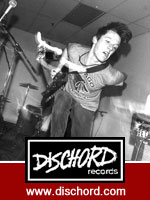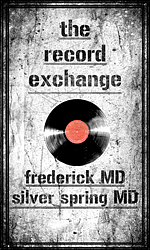 I wasn’t sure what to expect last Sunday night. I was seeing three Icelandic bands—one quiet singer-songwriter, one Afro-beat dance act, and one bow tie-wearing electro-pop group. At the Kennedy Center. Free. One thing was clear—there was no way Iceland Airwave’s showcase was going to be boring.
I wasn’t sure what to expect last Sunday night. I was seeing three Icelandic bands—one quiet singer-songwriter, one Afro-beat dance act, and one bow tie-wearing electro-pop group. At the Kennedy Center. Free. One thing was clear—there was no way Iceland Airwave’s showcase was going to be boring.
Part of the Kennedy Center’s month-long Nordic Cool festival, this was a rare chance for Washingtonians to see up-and-coming Icelandic artists Sóley, Retro Stefson, and FM Belfast.
When I arrived at the Millennium Stage an hour before the showcase started, the line for seats already stretched into the Grand Foyer. There were college-aged kids who looked like they had been picked right out of Reykjavik to be dropped in line, parents holding small children, tourists excited to see even something at the historic Kennedy Center, a few elderly folks sitting on benches. At one point, someone pointed out the Icelandic Ambassador to me. I think it’s fair to say that this wasn’t your traditional DC show scene. And the turnout was substantial enough that the crowd left standing in the back actually needed the jumbotron to see the performances.
Sóley hit the stage first. An integral part of the small Icelandic music scene, she played keyboard in Seabear and Sin Fang before striking out on her own. For someone who claims she didn’t know she could sing until a few years ago, her voice is not only beautiful but captivating—it sounds almost fragile in person, conveying the entirety of emotion and nuance that is also is evident on Sóley’s face as she sings.
Her sound is often slow, with sparse instrumentals—a keyboard here, one guitar, a hint of percussion. Unlike many artists, she is unafraid to invite silence into her music, and occasionally loops her own voice to build complex layers of sound. It all makes for a fascinating performance. Between songs, she joked to the audience, laughing. The quick transitions between the darkness of the music and her joyful interludes should have been disconcerting, but somehow she managed to stay charming.
Retro Stefson came on next, with six young, energetic band members filling the stage to play their own version of globally-influenced electronic dance music. Coming off of winning Song of the Year, Music Video of the Year, and Performers of the Year just days before at the Icelandic Music Awards, it’s hard to call Retro Stefson a truly up-and-coming act anymore, at least in Iceland. But they’re still new to the American audience, and were out to prove themselves on Sunday.
If you’ve ever been to a show at the Millennium Stage, you know the set up—a certain number of chairs in the front, a dividing line, and everyone else left to stand behind the chairs in the back. Retro Stefson was having none of that.
One song into the set, lead singer Unnsteinn Manuel Stefánsson implored, “We need to take down the barricades in the back. This is democracy!” While the crowd didn’t quite rush the stage, people did finally stand up, following the band’s instructions to jump in unison and from side to side. Retro Stefson has been together for seven years, and their newer work has a complex maturity to it. But the group’s oldest members are still in their early twenties, and their stage presence belies—or perhaps embraces—their age. The band is used to playing high schools, colleges, and the European festival circuit, and their sound is certainly ready-made for a rowdier scene.
The showcase ended with the veterans of the groups, FM Belfast, a straight-up fun electro-pop group—but with some added quirkiness for good measure. On stage were a keyboardist, drummer, two lead singers, and a combination back-up singer/maracas master/badass lead dancer.
FM Belfast isn’t afraid of a little kitsch, and they certainly know how to play to the crowd. Both the front men were sporting bow ties. And at one point, the band’s the female lead singer Lóa Hlín Hjálmtýsdóttir gave us her rendition of Elaine Benes’s famous dance from Seinfeld.
This was soon after she told the crowd, “We were going to play song with a lot of swear words. But there are children here. And seniors….So we’re going to skip that one.” It was one of the few reminders during the show of the diversity of the crowd, and how different this setting must be for artists who perform on the Millennium Stage.
As FM Belfast launched into their hit “Underwear,” the men of band stripped down to their skivvies, finishing out the set dancing on stage in their underwear. It was a move that could have easily been seen as a gimmick, but FM Belfast pulled it off. Their seemingly unending energy levels, outrageous dance moves, and catchy beats actually got everyone at the Kennedy Center up and dancing. This is music that really just makes people happy, and brought together an unlikely crowd in an unlikely place, listening to a group of Icelandic musicians dancing in hipster glasses and underwear. It was quite a moment.
Before the showcase, I had the chance to chat with Sóley and two of the members of Retro Stefson. This was Sóley’s second time in the District since November, when she spent a few days in our city to open for fellow Icelanders Of Monsters and Men at the 9:30 Club, and played her own set at DC9.
How did you get started playing music?
I’ve been playing music since I was a child. I studied classical piano and later on jazz piano and then I went to the Arts Academy of Iceland…When I graduated there in the spring 2010, at the same time my EP came out and then the next. And now I’m a musician I guess.
How does your classical and jazz training influence your music now?
I’m really happy that I always think a little classically. When I’m making an album, I try to think it from the beginning ’til the end. So I’m not doing singles and singles and singles…I think that studying the classical stuff taught me that, how to control the stuff that you’re doing and how to see it as a whole rather than as small pieces.
How is the writing process different in a group than as a solo artist?
When you’re doing your solo stuff, I can totally be my own boss, I can totally do what I want. No one is telling me, or playing something that I don’t really like, you know?
How would you describe your sound?
I try to write the lyrics as they would be kind of surreal and in a dream. And I wanted it to sound a little bit dark, but not dark like, “I’m going to jump into the sea.” It’s all really adventurous, humorous darkness I would say.
As someone who has never been to Iceland, I just imagine the stereotypical icy glaciers and rolling mountains and waterfalls. Does the scenery in Iceland inspire your work?
Most of the musicians that I’ve talked to, because we all get this question, they’re all like, no. But in a way, it probably does. It’s really nice to be in Reykjavik because it’s by the sea and there are mountains and you can drive for half an hour and you’re in beautiful country. But it doesn’t really affect my music. I don’t know if I would do the same music if would live somewhere else because I think my music comes from here [points to her heart] not out there.
Your website and your album covers, and seeing you here today, are all a little dark, like how you described your music, but with a very thoughtful aesthetic. How important is that aesthetic to you?
I think artwork is really important – the artwork is what you stand for. I’ve always talked about it in the way you see books. I just don’t understand how ugly the artwork of books can be…But I think musicians think a lot about how they want to visualize their music.
Do you prefer vinyl or mp3?
Vinyl, definitely. I have a good vinyl player and good stuff and it’s fun because the art work is bigger and you have something physical. It’s more work but it’s fun.
Is there one record you think everyone should own?
The first thing that came to my mind was Rumours by Fleetwood Mac. It’s a nice album. No, it’s not a nice album, it’s a really good album.
Of the seven members of Retro Stefson, six were able to come to Washington for the showcase (the final member actually joined the band too late to secure a visa.) I talked with lead singer Unnsteinn Manuel Stefánsson and his brother, bassist Logi Pedro Stefánsson, who had recently discovered The Vinyl District days before we talked.
What do you want fans to get out of your show today?
Unnsteinn: Just have extreme fun, that’s what I expect. That’s what I hope, but it’s always different to play abroad.
Your band has been together for a while now, right?
Unnsteinn: The whole band has been friends since we were six, since we started grade school. But the band started in the last year of grade school, that’s when you’re 15 in Iceland. So it’s our seventh year.
Any tips or secrets for bands staying together for so long? Do you all still get along?
Unnsteinn: We are brothers so we argue a lot, but it’s a healthy argument.
Logi: We lived actually together for half a year, seven people in a two bedroom apartment in Berlin and I think that…
Unnsteinn: Yeah, that’s a tip, don’t do that!
Logi: But that was nice because we did better music after it.
What’s your writing process like as a band?
Unnsteinn: I write most of the music.
Do other band members have a say in the process?
Logi: Of course.
Unnsteinn: Not really
Logi: It really depends. The drummer has a really distinctive drum sound, he does really complicated stuff but you don’t really notice it.
Unnsteinn: It’s not something that we could write on the computer beforehand, so everyone brings their own sound.
How has your sound changed over the years?
Logi: Dramatically.
Unnsteinn: We started with more acoustic songs, then we moved into disco, and now it’s more electronic.
Were those changes conscious?
Logi: For me it was really conscious because after awhile, I got really tired of listening to the other albums. I don’t think they aged that well even if they were only two or four years old. But for the new album, I wanted to do something that would hit people as really complete.
Unnsteinn: And original. But one thing is also that I wouldn’t say that it’s a conscious decision, it’s just a part of being a teenager and then you grow older. When we were 15, we were listening to indie music and acoustic folk rock, then you go clubbing, and we started working as teachers and that influences us a lot as well.
What are you listening to right now?
Logi: I’ve been listening to Jeremih, I love his Late Nights mix tape. Even if it was only a mix tape, it was the most complete and best album I listened to last year because it’s really, really good and really well produced and really smart…The other day I was judging a singing competition in this high school and this guy was singing “Casimir Pulaski Day” by Sufjan Stevens. I listened a lot to it when I was younger so I got back into now because it’s still really good music.
Unnsteinn: I listen to a mix of country and techno.
Logi: In Iceland, you don’t hear about country music and it’s always funny watching the Grammy’s in the U.S. because you don’t know half of the country artists.
How do you listen to music?
Logi: I buy a lot of vinyl. I listen a lot to British bass music, and I keep always buying because that’s a really strong vinyl scene.
Unnsteinn: I have a big vinyl collection, but it’s in three countries so it’s difficult to keep a hold of it.
Why do you think so many young people are still listening to vinyl?
Logi: CDs break…First, it’s because it’s really cool to listen to vinyl and have turntables. That’s why young people like it. But then, people start really appreciating it, finding it’s nice to really own the copies of the music.
Unnsteinn: In Iceland, we have this word, I don’t know if you have it in English, it’s called “ownable,” like it’s more precious…
Like a tangible item you can hold?
Unnsteinn: Yeah.
Logi: We are the mp3 generation. But all the music I had when I was 12, I don’t have it now because it’s in some old computer that’s broken now.
Photos: Kristin Horgen






























